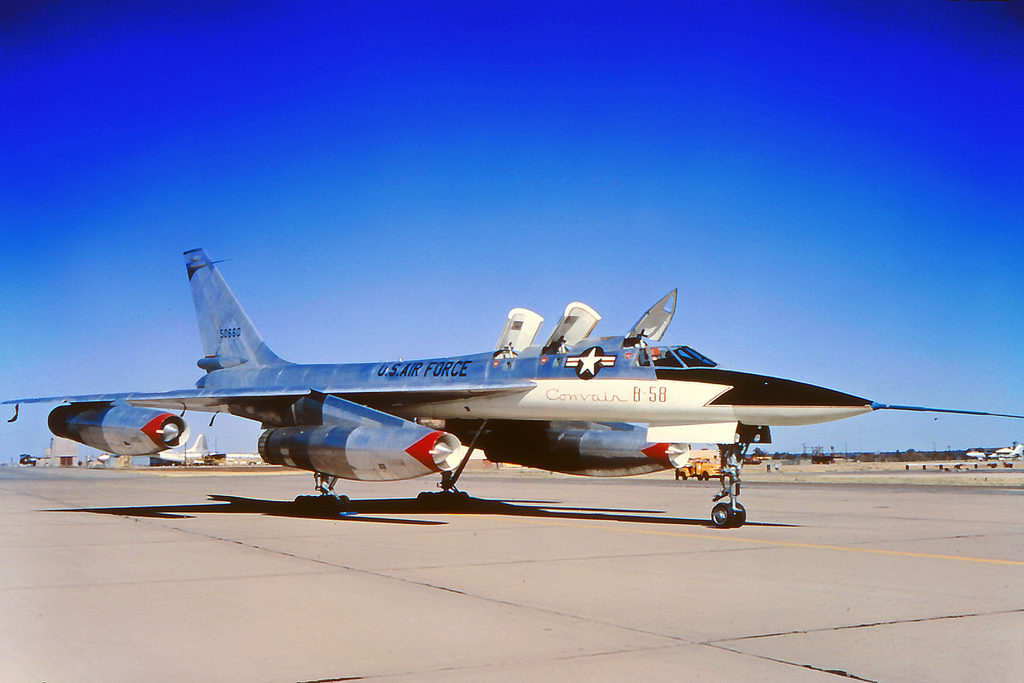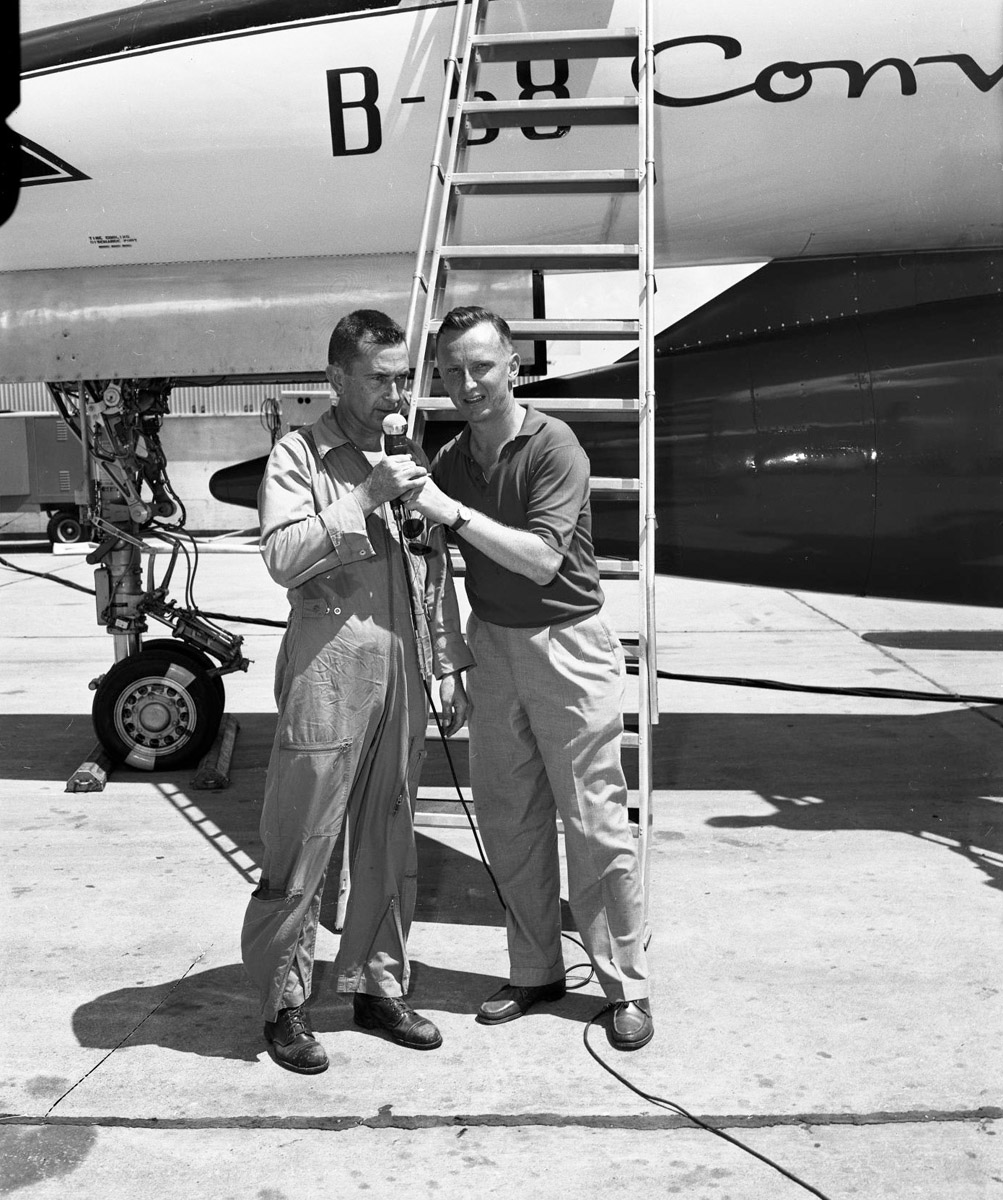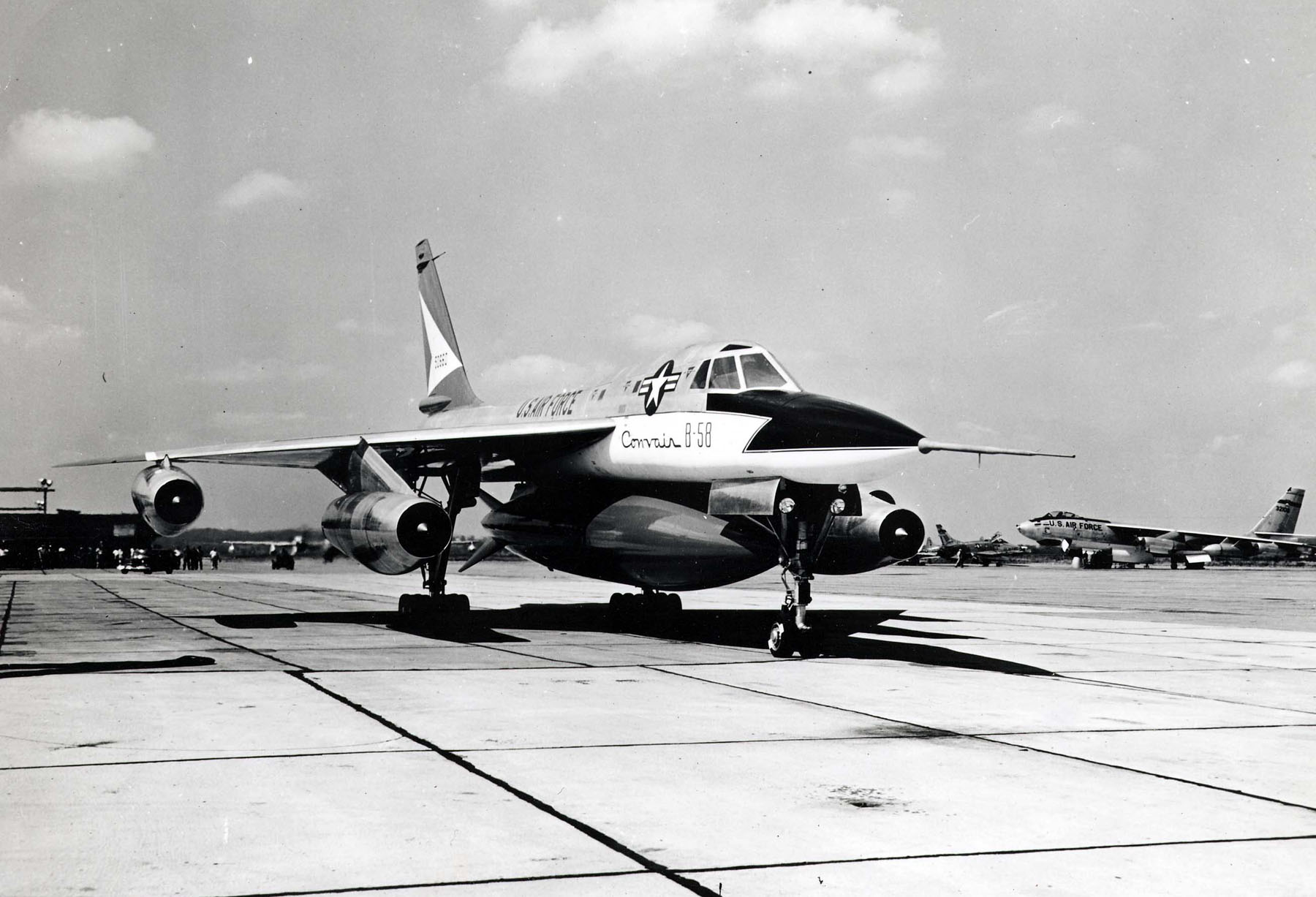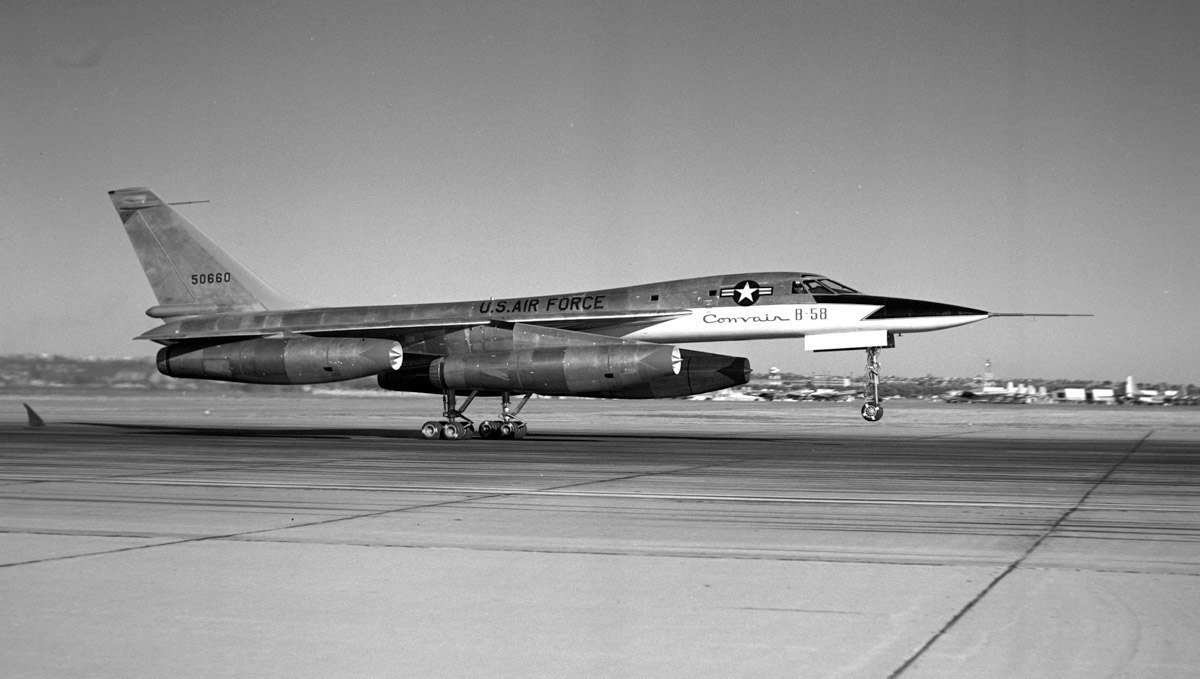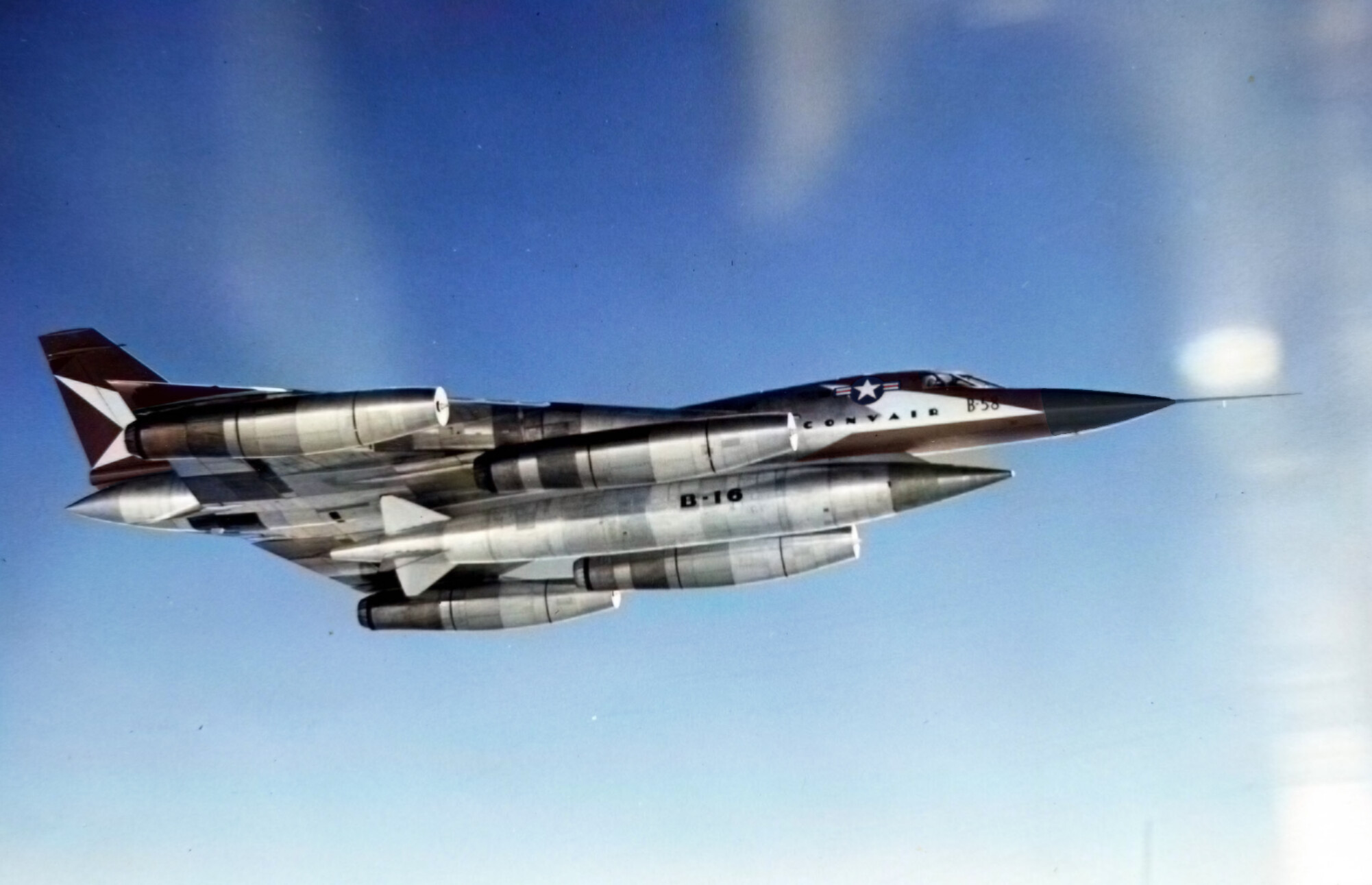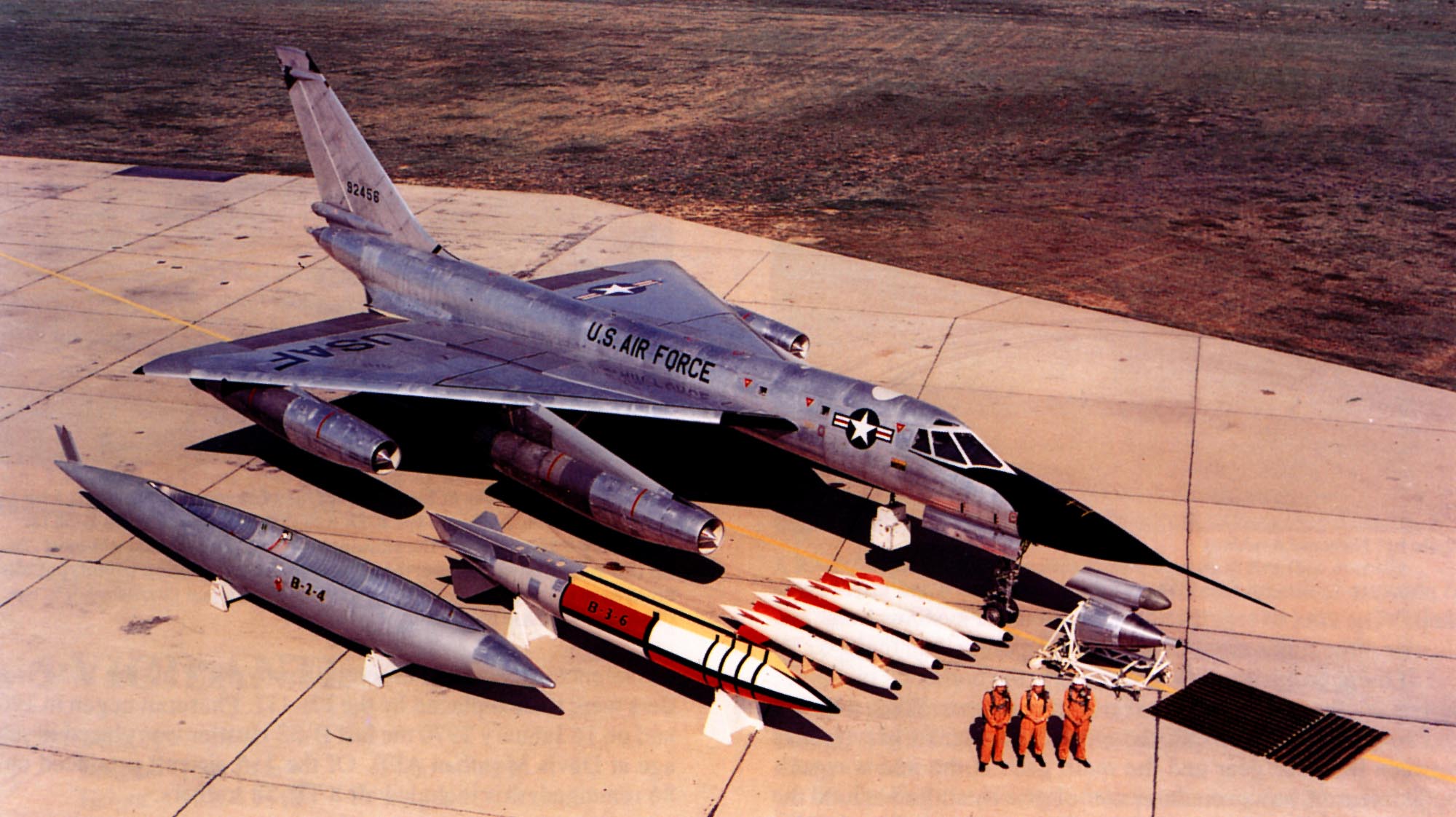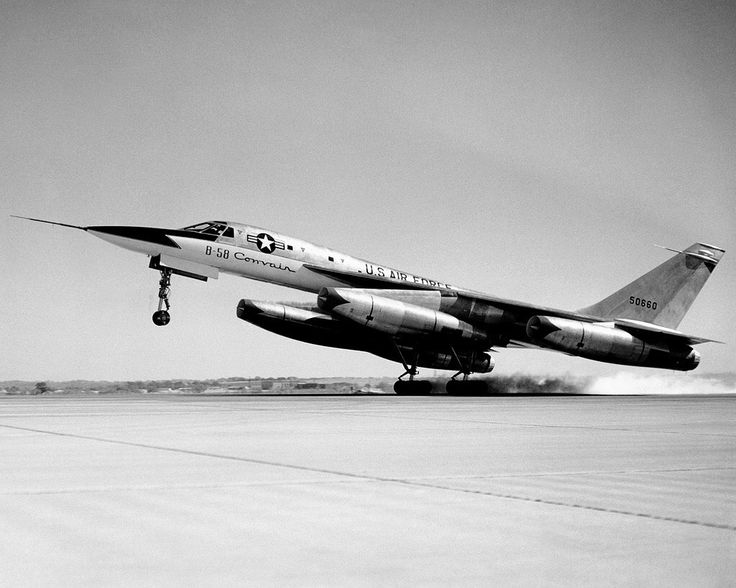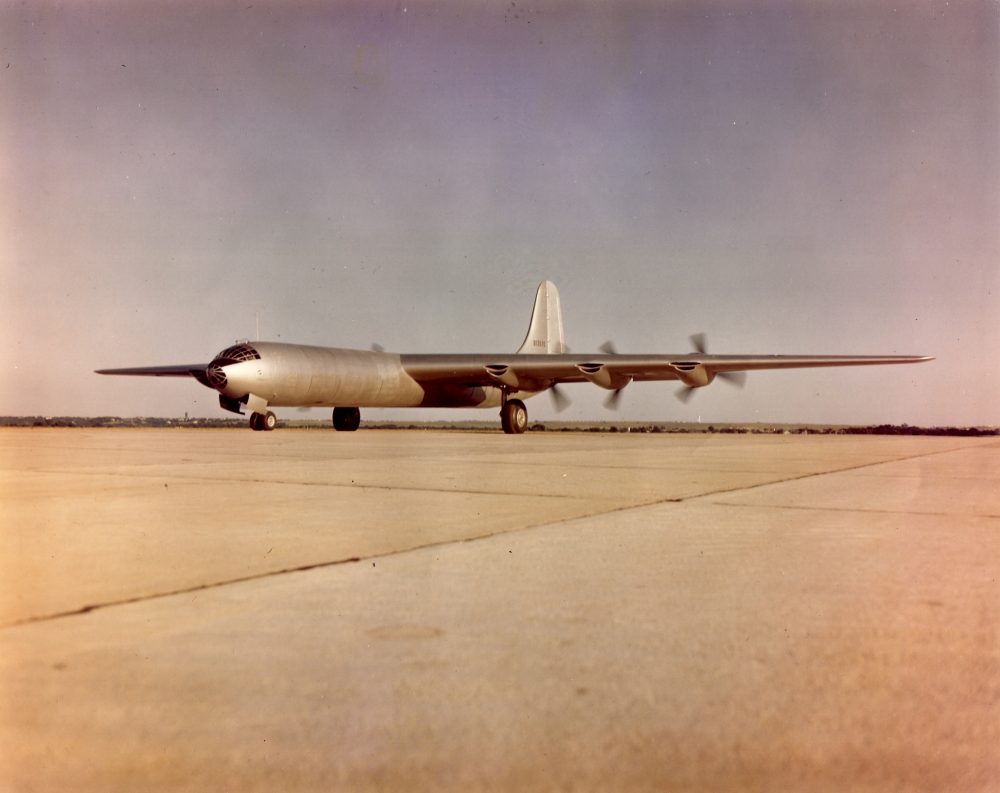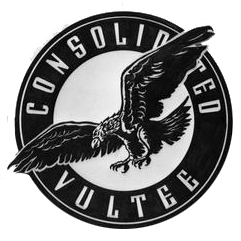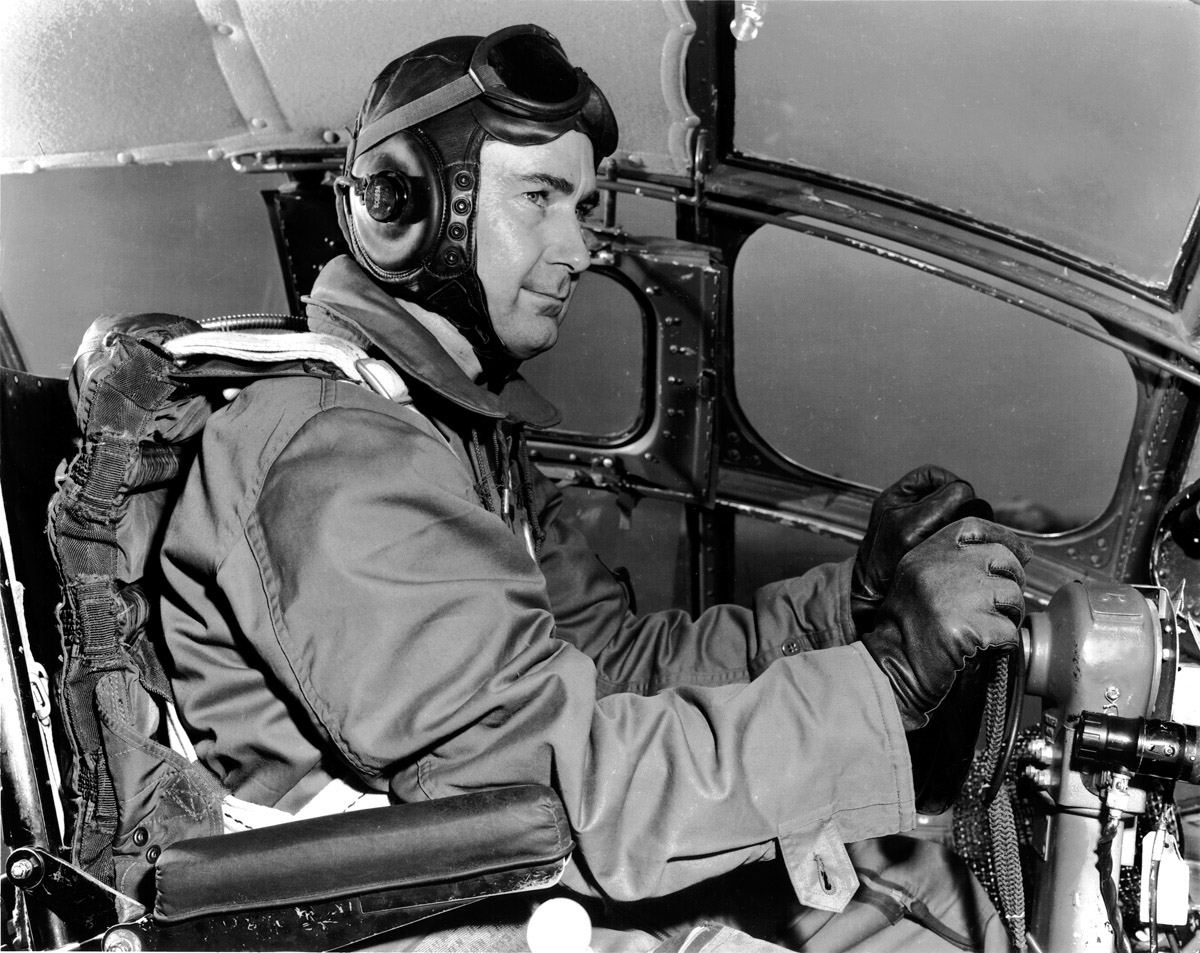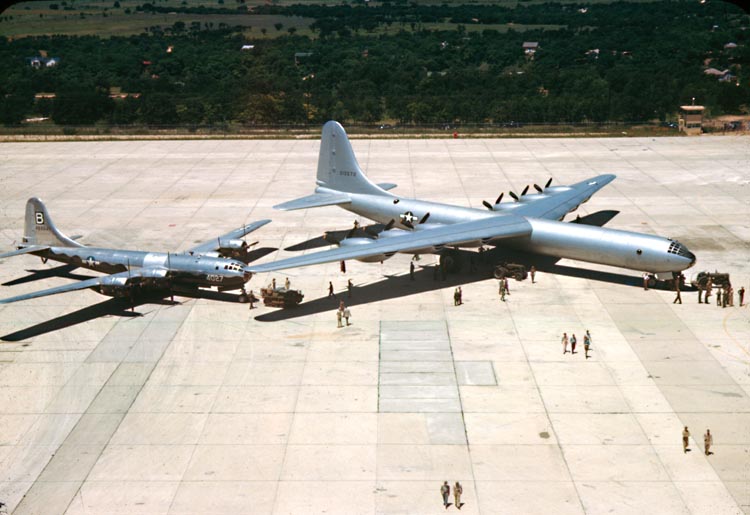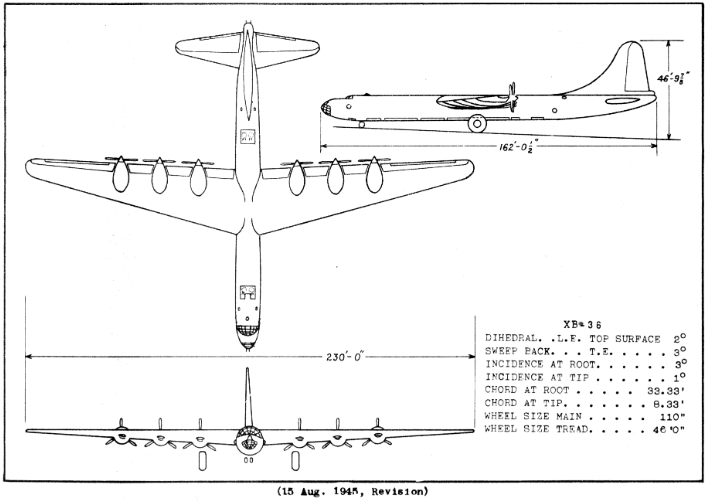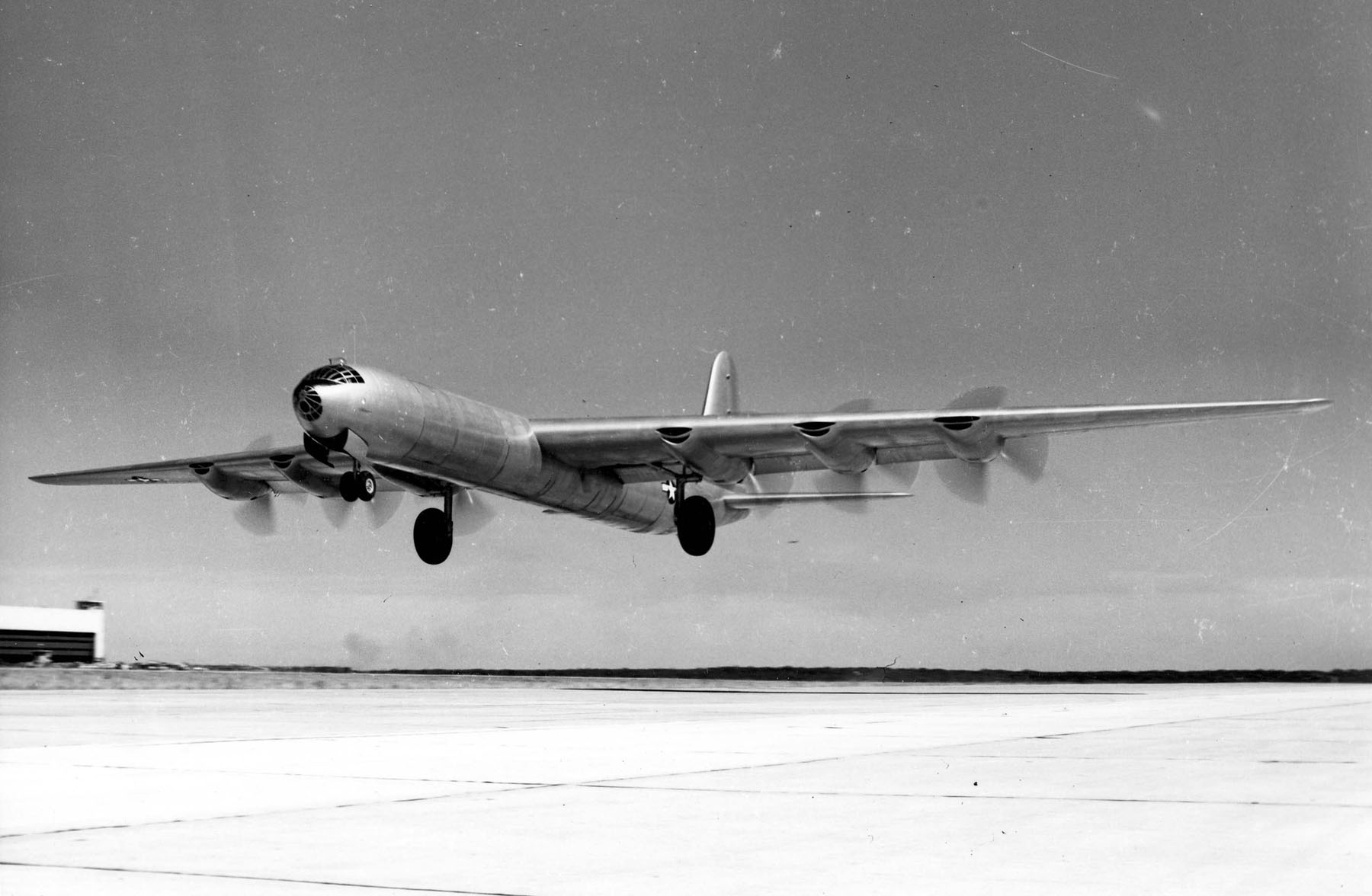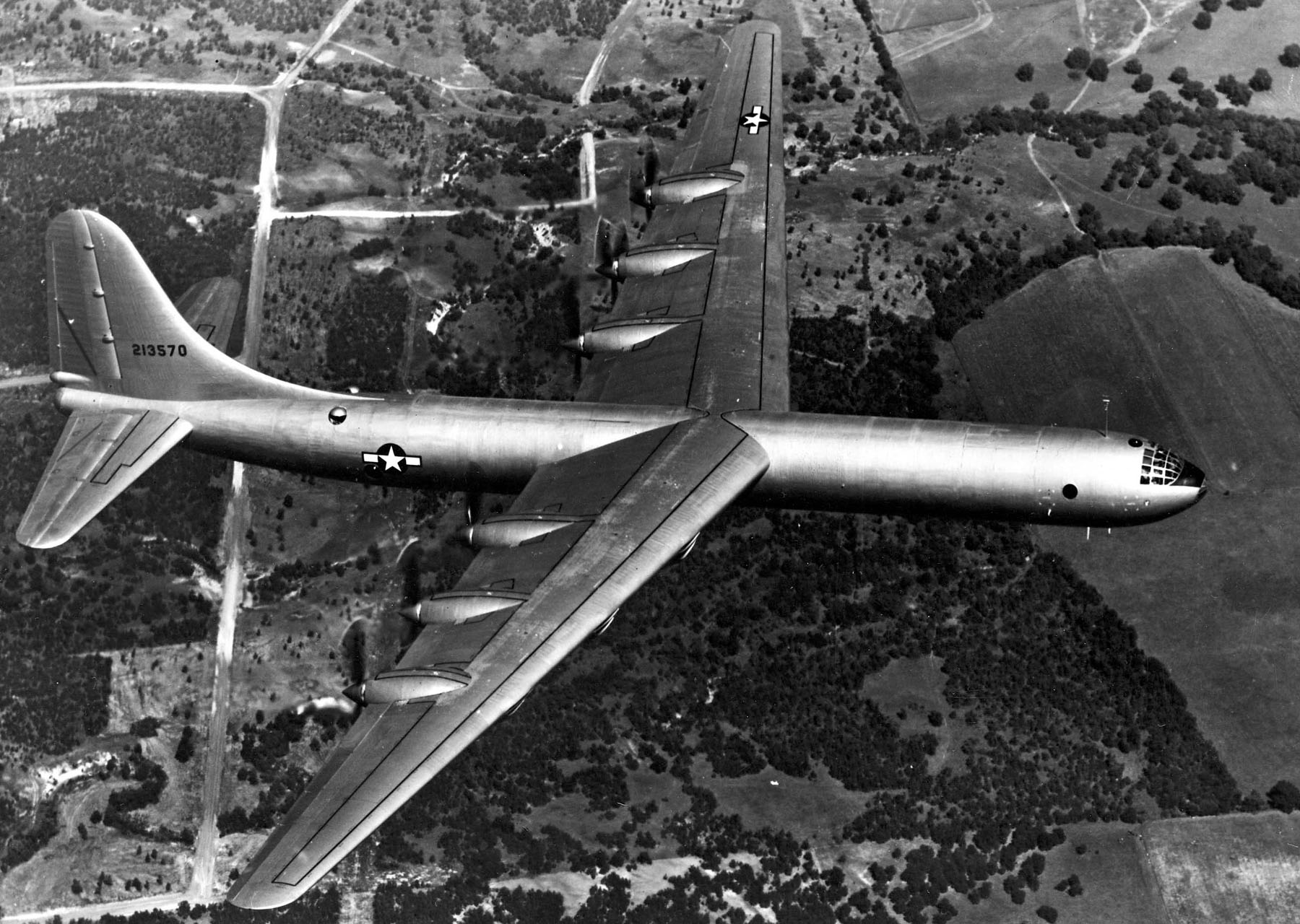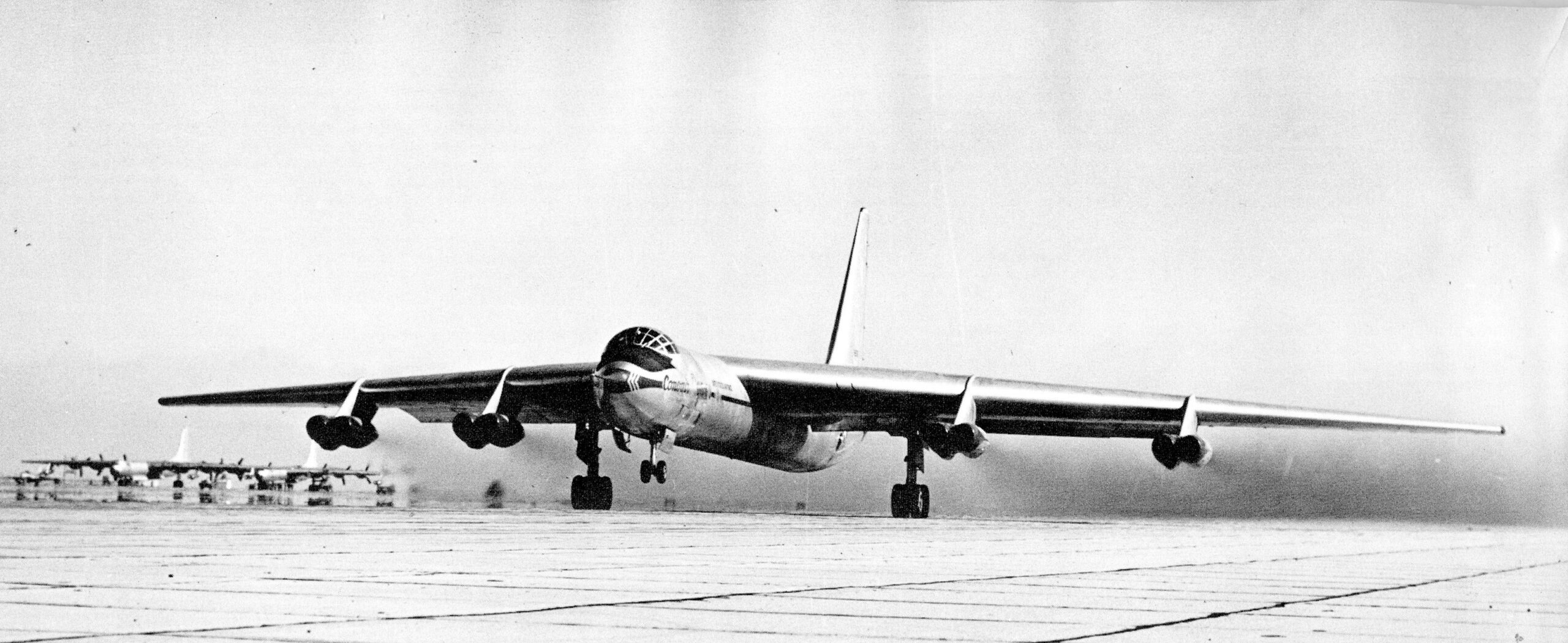
18 April 1952: Piloted by Chief Test Pilot Beryl A. Erickson, and Arthur S. Witchell, the prototype Consolidated-Vultee YB-60-1-CF, serial number 49-2676, made its first takeoff at Carswell Air Force Base, Fort Worth, Texas.
As a proposed competitor to Boeing’s B-52 Stratofortress, the YB-60 (originally designated B-36G) was developed from a B-36F fuselage by adding swept wings and tail surfaces and powered by eight turbojet engines. Its bomb load was expected to be nearly double that of the B-52 and it would have been much cheaper to produce since it was based on an existing operational bomber.
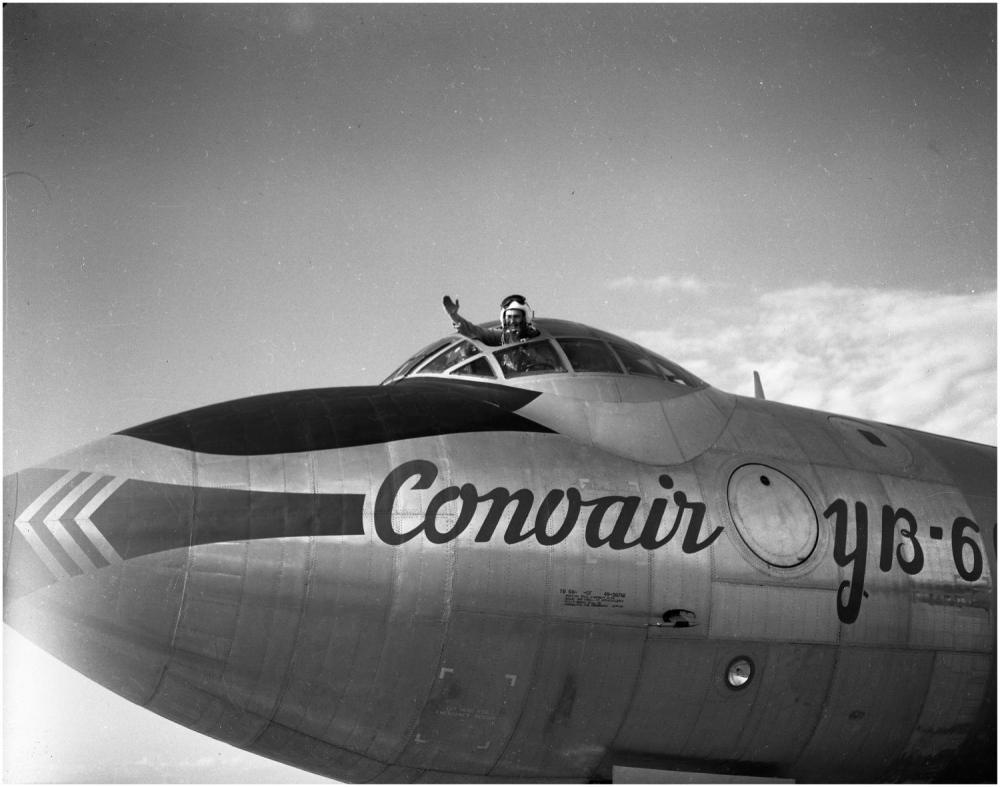
The Associated Press reported:
New Jet ‘Rides Like Cadillac’, Crew Says After Test Flight
FORT WORTH, April 18 (AP)—The all-jet YB-60 bomber “rides like a Cadillac” and “touched at fighter speed,” crew members said Friday after the ultra-secret global bomber completed its first test flight.
“I came back with very little perspiration, B.A. Erickson, chief test pilot for Consolidated Vultee Aircraft Corp. said. “That’s the answer to any pilot.”
Erickson tried the YB-60’s performance and capabilities only “modestly,” he said. The flight was made at a moderate altitude—”a couple of Texas miles,” Erickson said.
Rides Like Cadillac
“The YB-60 rode like a Cadillac with no noise like a B-36—no prop noise or vibration,” Arthur S. Witchell Jr., the co-pilot, said.
“This is the Queen Mary coming in gracefully,” Erickson said.
The YB-60, an eight-jet bomber sometimes called a jet version of the B-36, was in the air one hour and six minutes. Erickson said it “touched at fighter speed.”
The plane is about the same size as the B-36, Erickson said. “Most any B-36 pilot would feel right at home,” he said.
Higher Speed Tests
Witchell said tests would probably be made soon at higher speeds and higher altitudes.
The plane took off with a deep roar, with a shrill, whining overtone. Several thousand spectators, including Air Force personnel from Carswell Air Force Base, home of the B-36, lined the left side of the Carswell runway and stood on rooftops.
The spectators were able to distinguish little more than the YB-60’s extreme, almost-triangular swept-back shape.
The YB-60 made a rendezvous in the air with a B-25 Air Force camera plane from which highly secret photographs were taken.
—Valley Morning Star, Volume XLII, No. 271, Saturday 19 April 1952, Page 1 at Columns 3 and 4.
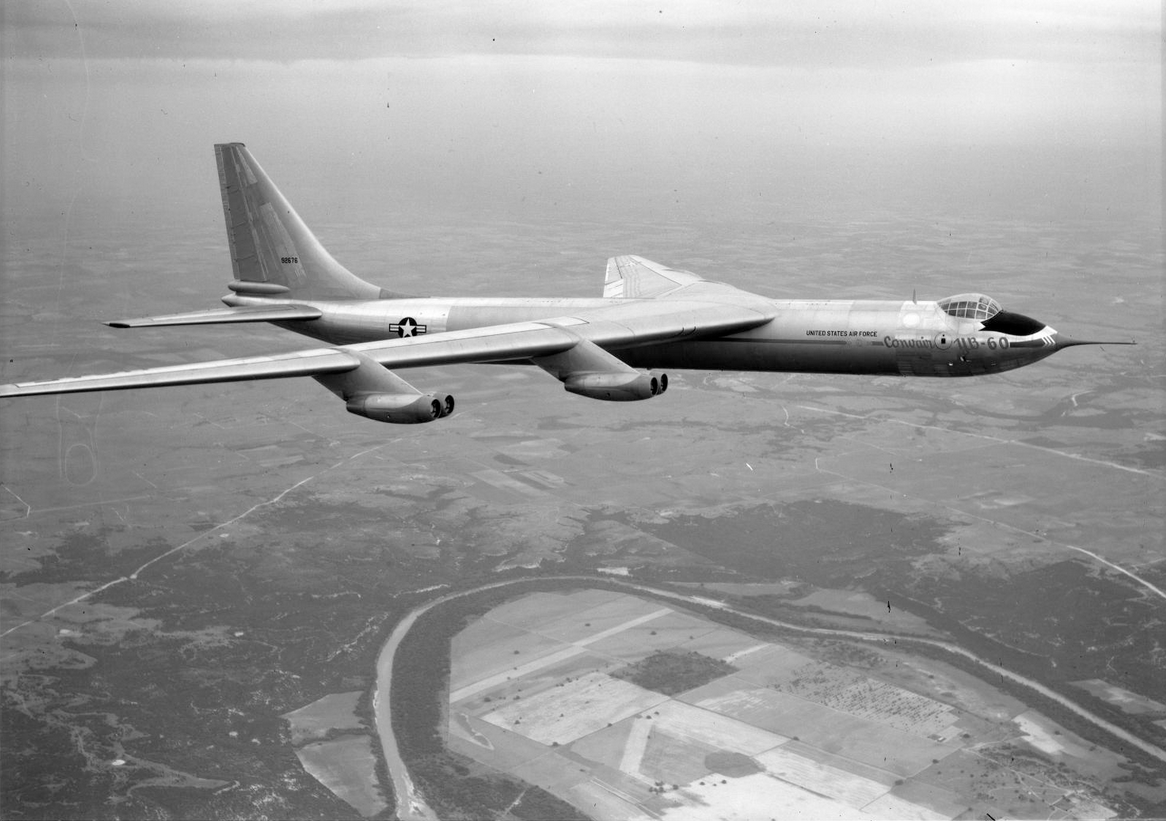
The YB-60’s first flight was three days after that of the Boeing YB-52 Stratofortress. In testing, it was 100 miles per hour (161 kilometers) slower than the B-52 prototype, despite using the same engines. A second B-60 prototype was cancelled before completion, and after 66 flight hours the YB-60 test program was cancelled. Both airframes were scrapped in 1954, with the second prototype never having flown.
The Convair YB-60 was 171 feet (52.121 meters) long with a wingspan of 206 feet (62.789 meters) and overall height of 60 feet, 6 inches (18.440 meters). The wings were swept at a 37° angle. It had an empty weight of 153,016 pounds (69,407 kilograms) and gross weight of 300,000 pounds (136,078 kilograms).
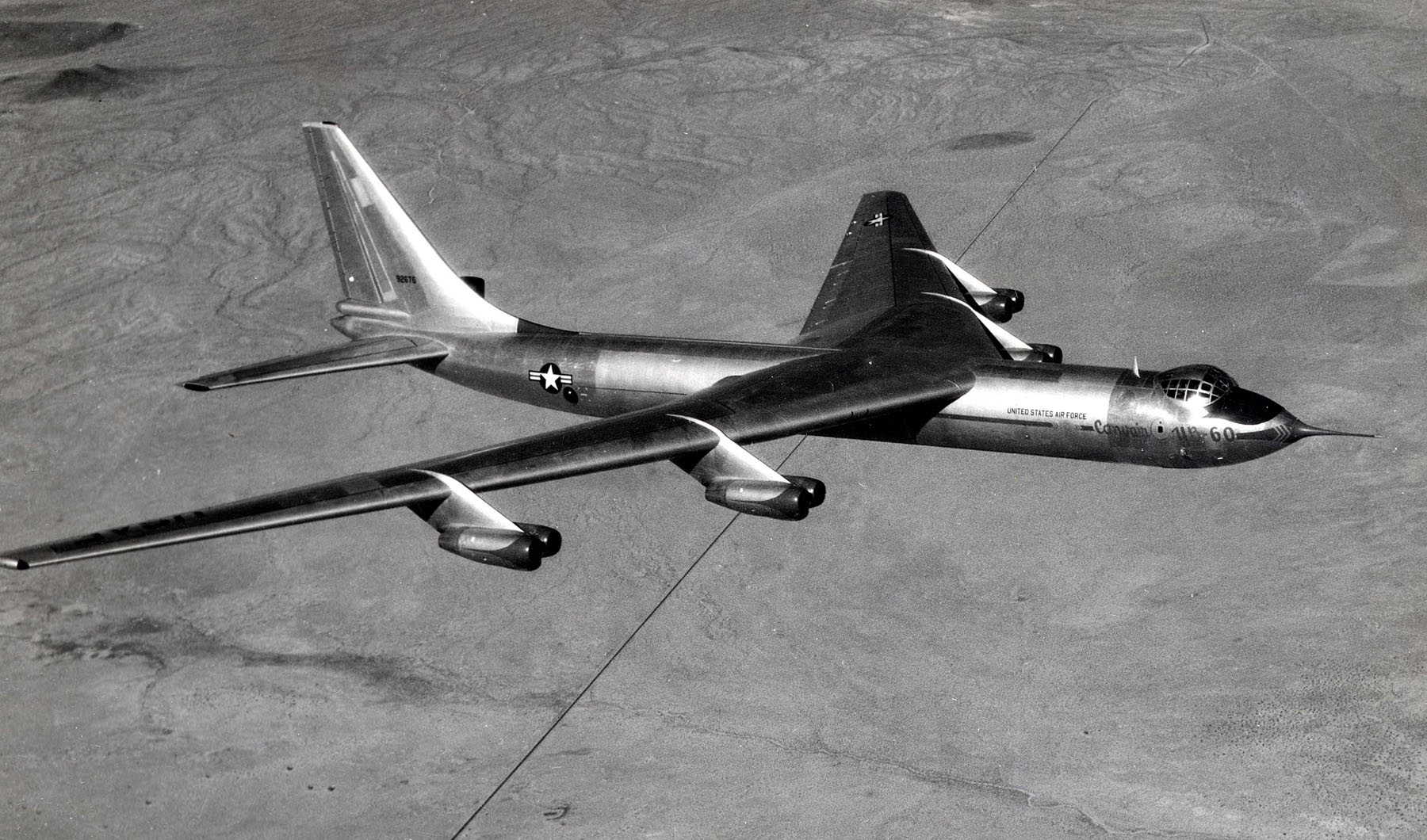
The prototype jet bomber was powered by eight Pratt & Whitney Turbo Wasp YJ57-P-3 turbojet engines. The J57 was a two-spool, axial-flow turbojet developed from an experimental turboprop engine. It had 16-stage compressor section (9 low- and 7-high-pressure stages), 8 combustors and a 3-stage turbine section (1 high- and 2 low-pressure stages). The YJ57-P-3s were rated at 8,700 pounds of thrust (38.70 kilonewtons), each. The YJ57-P-3 was 183.5 inches (4.661 meters) long, 41.0 inches (1.041 meters) in diameter and weighed 4,390 pounds (1,991 kilograms). These were the same engines used in the YB-52, and were similarly mounted in four 2-engine nacelles below the wings.
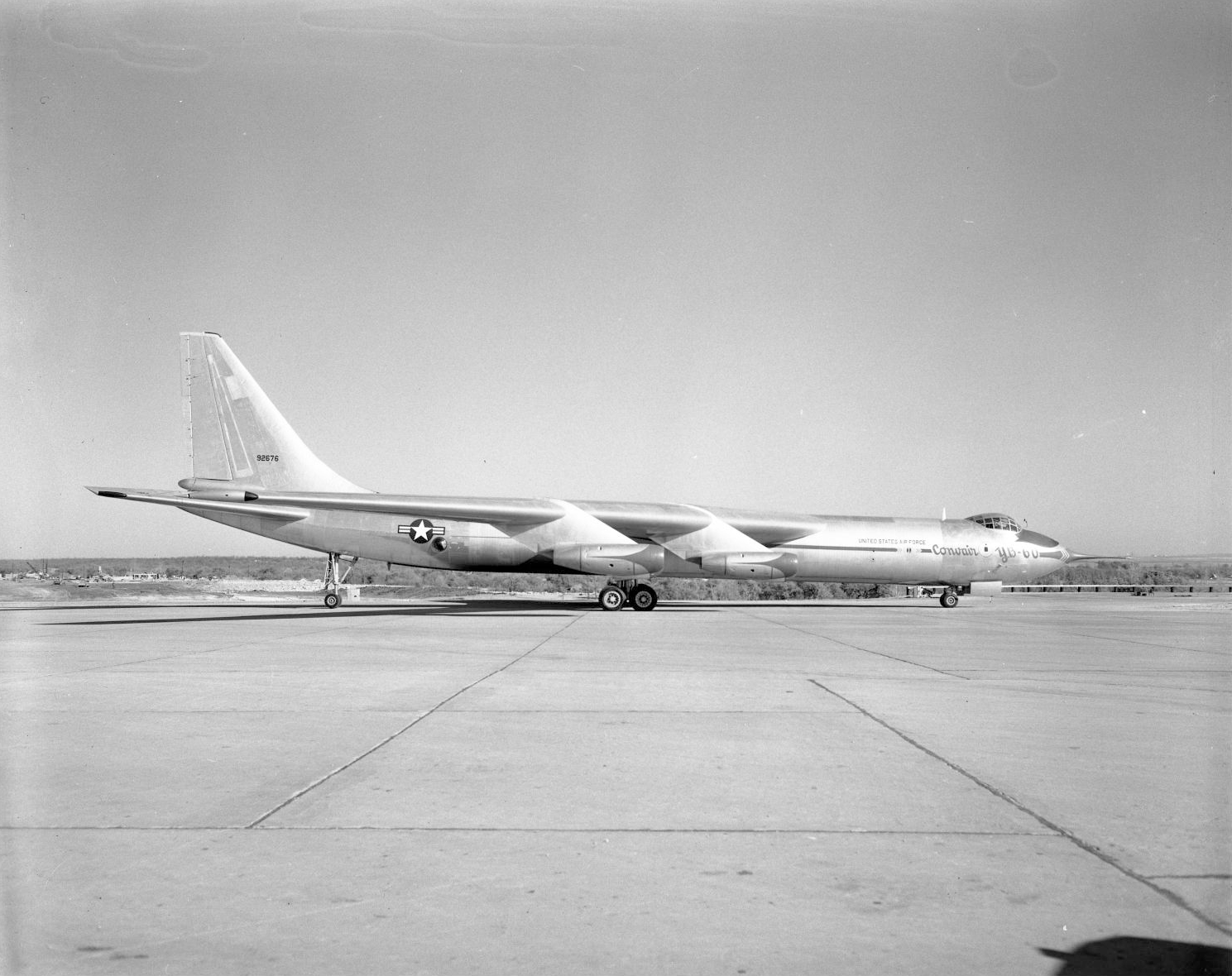
Maximum speed was 0.77 Mach (508 miles per hour, 818 kilometers per hour) at 39,250 feet (11,963 meters) and the combat ceiling was 44,650 feet (13,609 meters). The YB-60 could reach 30,000 feet (9,144 meters) in just over 28 minutes. Takeoff required 6,710 feet (2,045 meters) and 8,131 feet (2478 meters) were required to clear a 50-foot (15.24 meters) obstacle. Maximum range was 8,000 miles (12,875 kilometers) but the combat radius was 2,920 miles (4,699 kilometers) with a 10,000 pound (4,536 kilograms) bomb load.
The maximum bomb load was 72,000 pounds (32,659 kilograms). Defensive armament consisted of two M24A1 20 mm autocannon in a remote-controlled tail turret. The second YB-60 retained the upper forward and lower aft retractable gun turrets of the B-36, adding eight more 20 mm cannon.
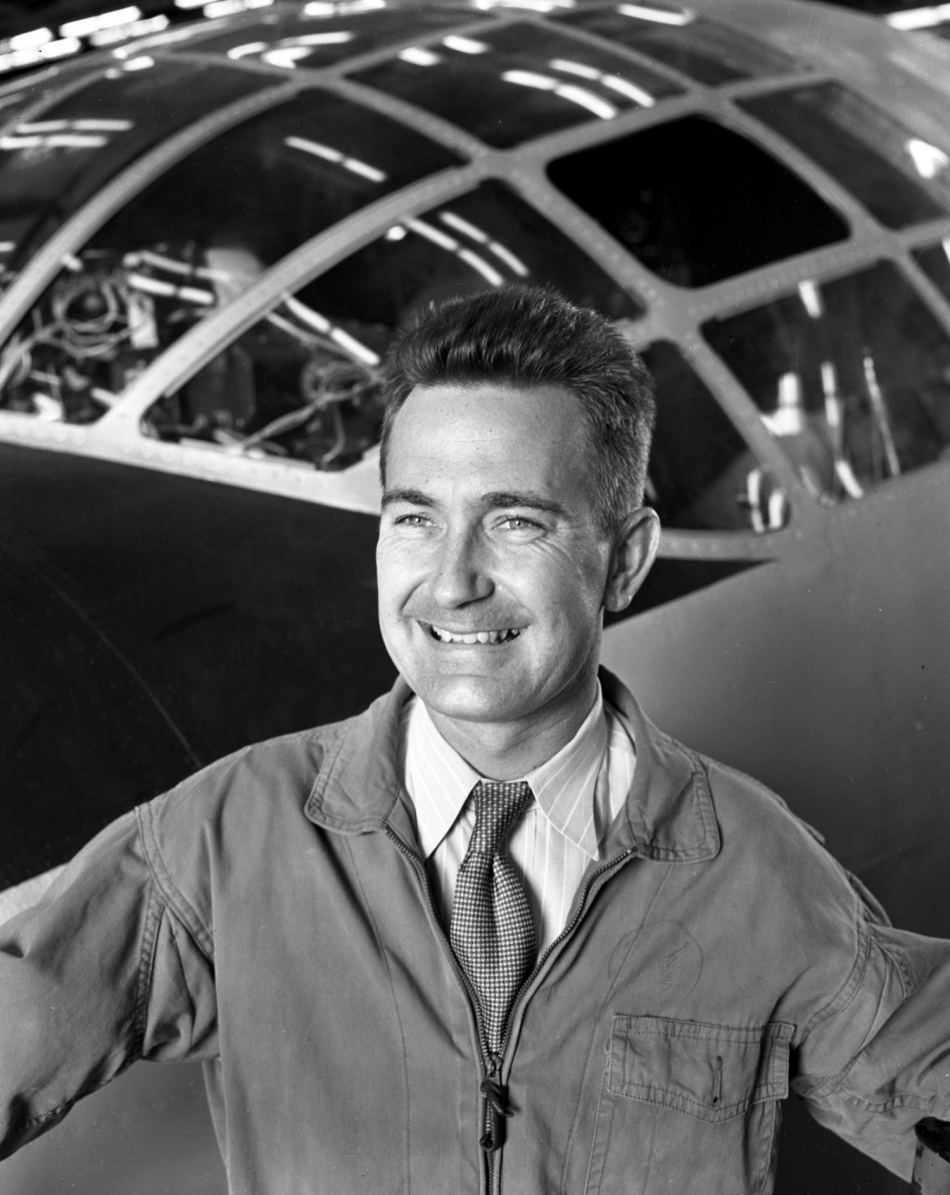
© 2017, Bryan R. Swopes
